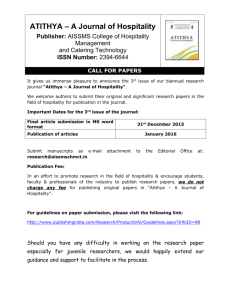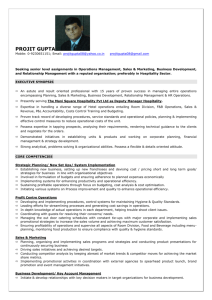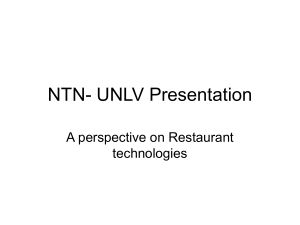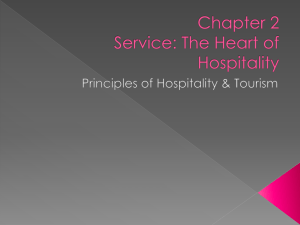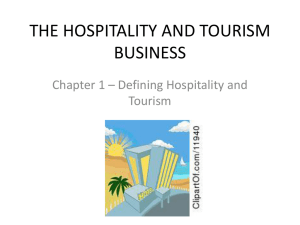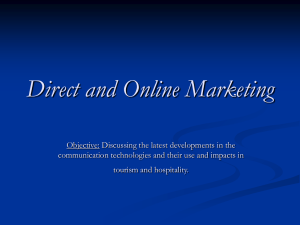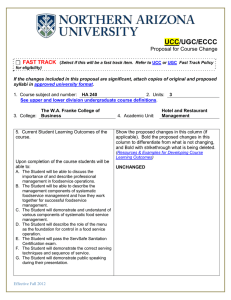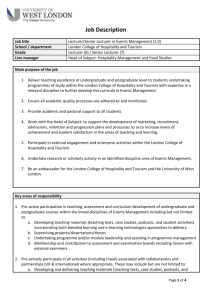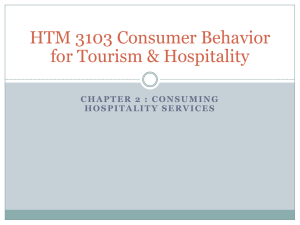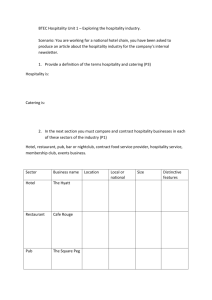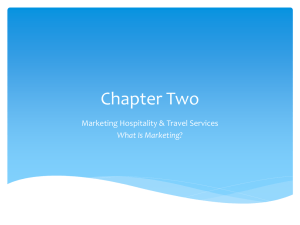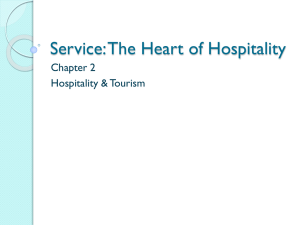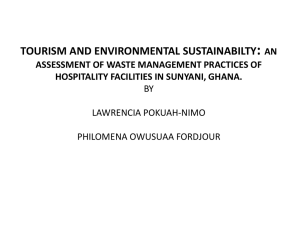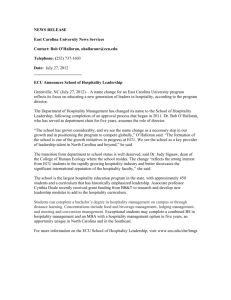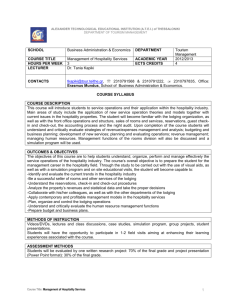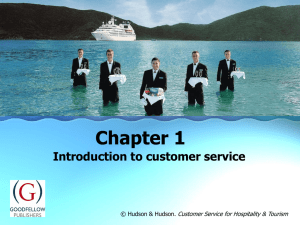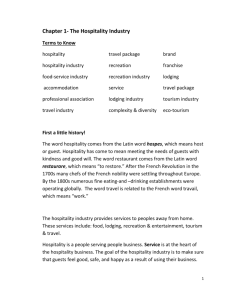Chapter 3- The Hospitality & Travel Marketing System
advertisement
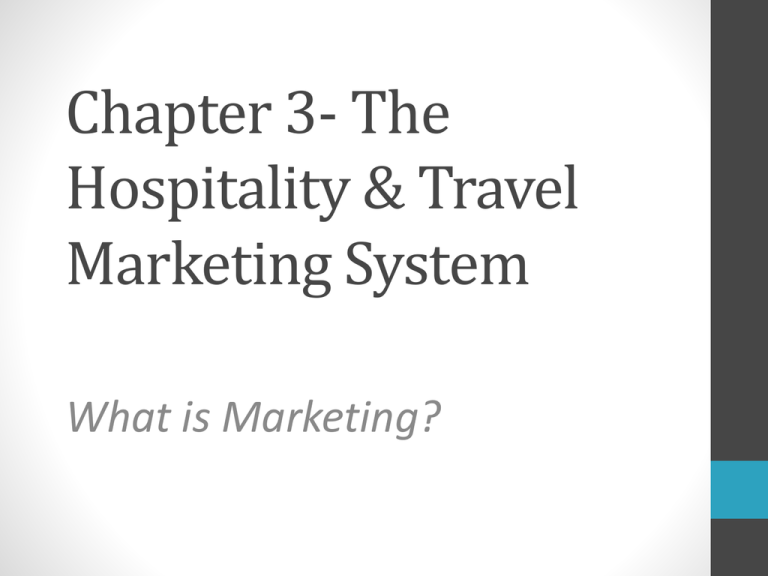
Chapter 3- The Hospitality & Travel Marketing System What is Marketing? Is our industry too diverse to have a common marketing approach? • A. Diversity of the Hospitality and Travel Industry • B. A Common Marketing Approach Is Available Many Different Approaches to Defining The Industry • It’s the Hospitality Industry • “The hotel, restaurant, entertainment, and resort industry” • Includes lodging, restaurants and foodservice, casinos and gaming • Cruise lines can be included because they provide beds, meals, and beverages, however they classify themselves as the cruise industry. • It’s the Travel and/or Tourism Industry! • “tourism has become one of the major players in international commerce, and represents at the same time one of the main income sources for many developing countries” (UNWTO). Many Different Approaches to Defining The Industry • It’s the Restaurant or Foodservice or Food Service Industry! • The National Restaurant Association (NRA) in the U.S. represents the restaurant industry. The Canadian Restaurant and Foodservices Association (CRFA) represents Canada. • CRFA says restaurants represent “restaurants, bars, cafeteria, and social contract caterers, as well as accommodation, entertainment, and institutional foodservice. • It’s the Lodging Industry! • Hotel industry, the resort industry, and the campground industry. Many Different Approaches to Defining The Industry • It Depends Where you are! • Outside of the United States tourism industry is well accepted as the umbrella term for the entire industry, including hospitality businesses. It’s not the industry at All! • NAICS (North American Industry Classification System) shows that hospitality and travel organizations are scattered among several NAICS codes. • NAICS is convenient way of looking at the industrial structure of a country. No Universally Accepted Definition of the Industry • People in the industry and educators have a sense of unity and belonging in using a common definition of the field. • Influencing legislation and government policy is a reason for the dividing the industry into groups that share common characteristics. • Sectors and groups • • • • Suppliers Carriers Travel trade intermediaries Destination marketing organizations (DMOs). The Systems Approach • An alternative way of looking at industries and organizations. • A system is a collected of interrelated parts that work together to achieve common objectives. • Macro-system • Exists at the hospitality and travel industry level • Micro-systems • Are found at the individual organization level. • Characteristics of Systems in the Hospitality and Travel Indus. • Openness- the micro-systems or individual organizations in the hospitality and travel industry which are dynamic, constantly undergoing change. Systems Approach Cont. • Complexity and Variety • Range of small businesses to multinationals conglomerates. • The interrelationships among the different organizations are complex. • Responsiveness • Must be responsive to change or we will not survive • All systems must have feedback mechanisms • Competitiveness • Competitive power and intensity increase as large corporations increase in size and market share. • Interdependency • Macro system includes a variety of interdependent and interrelated businesses and organizations involved in serving the needs of customers who are away from home. Systems Approach Cont. • Friction and Disharmony • Points of conflict, stresses, and tensions • Do not perform exactly as we think they should. The Hospitality & Travel Marketing System • • • • • Where are we now? Where would we like to be? How do we get there? How do we make sure we get there? How do we know if we got there? System Fundamentals • 1. Strategic marketing planning • Process of developing long term plans for marketing • 2. Marketing Orientation • Satisfying customer needs and wants must have top priority. • 3. differences between product and services marketing • Business of marketing and providing services • 4. Understanding Customer Behavior • Fully appreciate the personal and interpersonal factors that influence customer behavior. Benefits of Using the System • 1. Priority on planning • Plan ahead and anticipate future events • Short term/Long Term • 2. Logical flow of efforts • Right questions are asked at the right time • (where are we now? Where would we like to be?) • 3. Better balance of marketing activities • Results from using the hospitality and travel marketing system • 5 questions are given equal priority. Relationship of the system to strategic & tactical marketing planning • Long-term (strategic) planning • A period of more than two years • Short-term (tactical) planning • Covers two years or less


